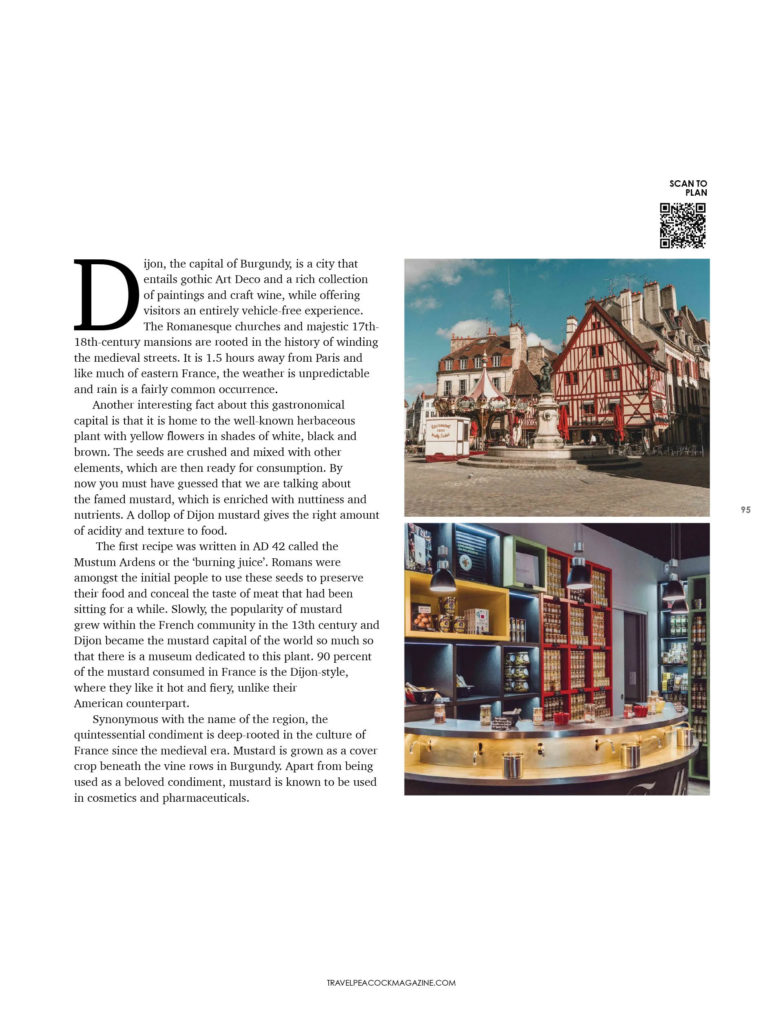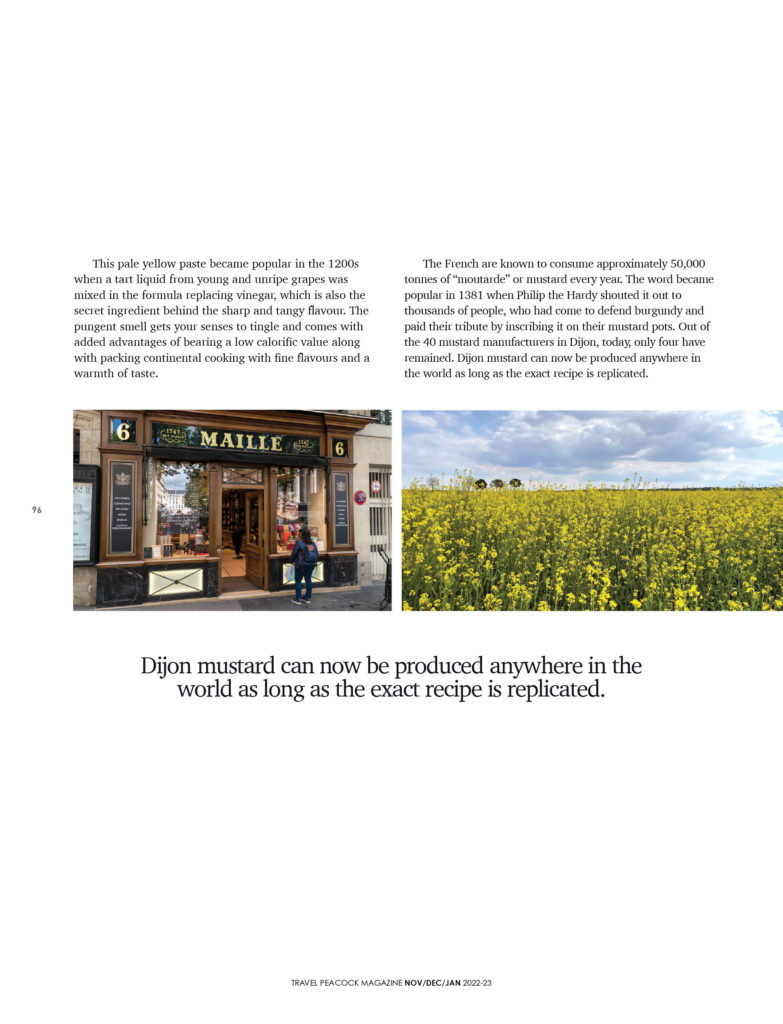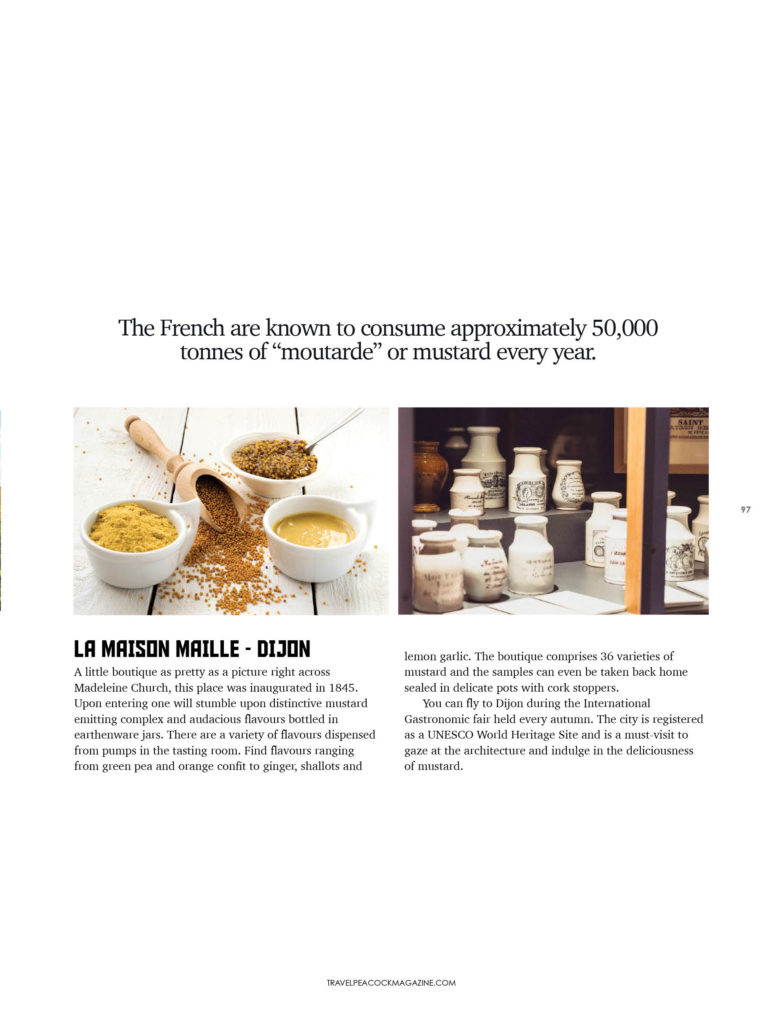
Dijon, the capital of Burgundy, is a city that entails gothic Art Deco and a rich collection of paintings and craft wine, while offering visitors an entirely vehicle-free experience. The Romanesque churches and majestic 17th-18th-century mansions are rooted in the history of winding the medieval streets. It is 1.5 hours away from Paris and like much of eastern France, the weather is unpredictable and rain is a fairly common occurrence.

Another interesting fact about this gastronomical capital is that it is home to the well-known herbaceous plant with yellow flowers in shades of white, black and brown. The seeds are crushed and mixed with other elements, which are then ready for consumption. By now you must have guessed that we are talking about the famed mustard, which is enriched with nuttiness and nutrients. A dollop of Dijon mustard gives the right amount of acidity and texture to food.
The first recipe was written in AD 42 called the Mustum Ardens or the ‘burning juice’. Romans were amongst the initial people to use these seeds to preserve their food and conceal the taste of meat that had been sitting for a while. Slowly, the popularity of mustard grew within the French community in the 13th century and Dijon became the mustard capital of the world so much so that there is a museum dedicated to this plant. 90 percent of the mustard consumed in France is the Dijon-style, where they like it hot and fiery, unlike their American counterpart.
Synonymous with the name of the region, the quintessential condiment is deep-rooted in the culture of France since the medieval era. Mustard is grown as a cover crop beneath the vine rows in Burgundy. Apart from being used as a beloved condiment, mustard is known to be used in cosmetics and pharmaceuticals.

This pale yellow paste became popular in the 1200s when a tart liquid from young and unripe grapes was mixed in the formula replacing vinegar, which is also the secret ingredient behind the sharp and tangy flavour. The pungent smell gets your senses to tingle and comes with added advantages of bearing a low calorific value along with packing continental cooking with fine flavours and a warmth of taste.
The French are known to consume approximately 50,000 tonnes of “moutarde” or mustard every year. The word became popular in 1381 when Philip the Hardy shouted it out to thousands of people, who had come to defend burgundy and paid their tribute by inscribing it on their mustard pots. Out of the 40 mustard manufacturers in Dijon, today, only four have remained. Dijon mustard can now be produced anywhere in the world as long as the exact recipe is replicated.

LA MAISON MAILLE – DIJON
A little boutique as pretty as a picture right across Madeleine Church, this place was inaugurated in 1845. Upon entering one will stumble upon distinctive mustard emitting complex and audacious flavours bottled in earthenware jars. There are a variety of flavours dispensed from pumps in the tasting room. Find flavours ranging from green pea and orange confit to ginger, shallots and lemon garlic. The boutique comprises 36 varieties of mustard and the samples can even be taken back home sealed in delicate pots with cork stoppers.
You can fly to Dijon during the International Gastronomic fair held every autumn. The city is registered as a UNESCO World Heritage Site and is a must-visit to gaze at the architecture and indulge in the deliciousness of mustard.

 Add to favorites
Add to favorites
